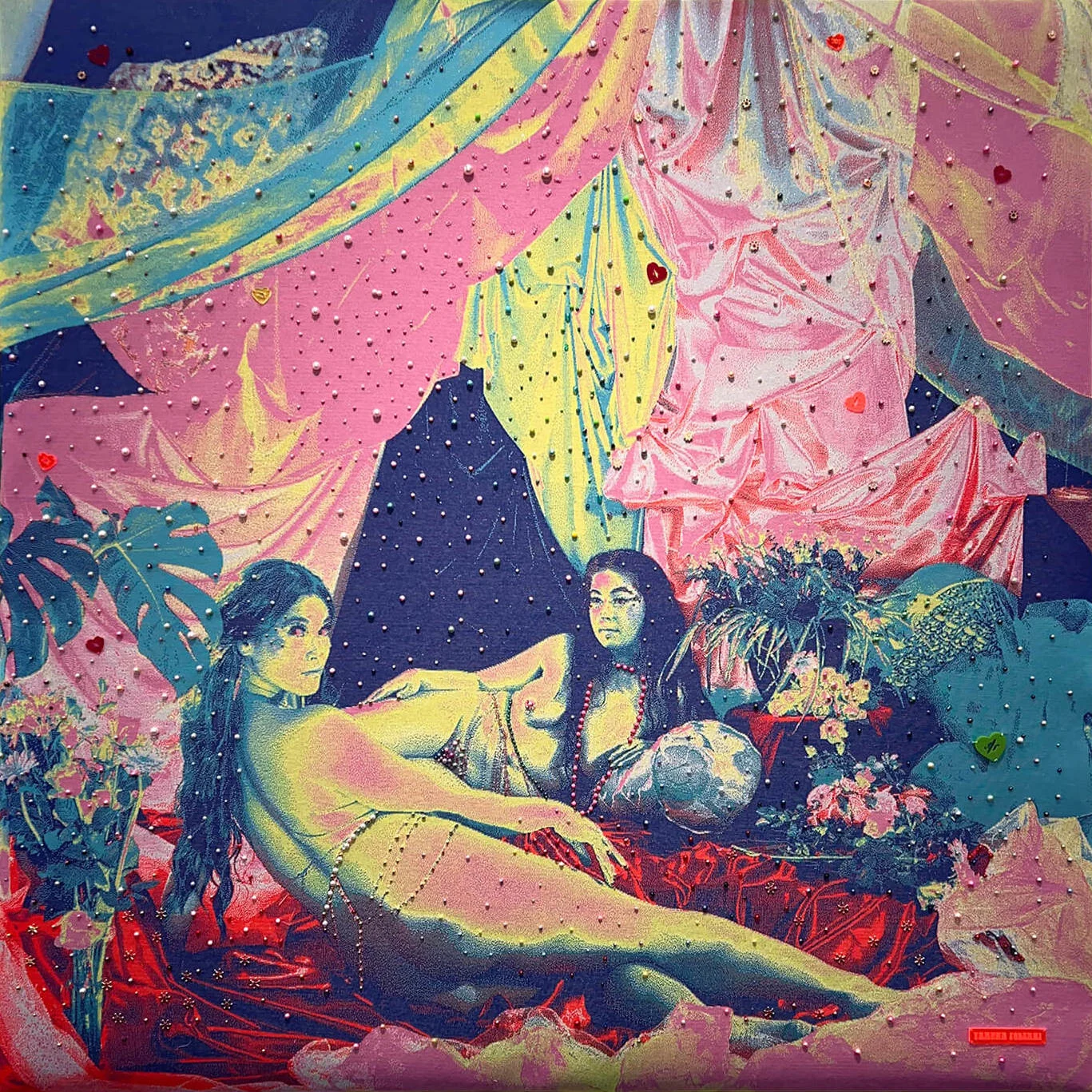
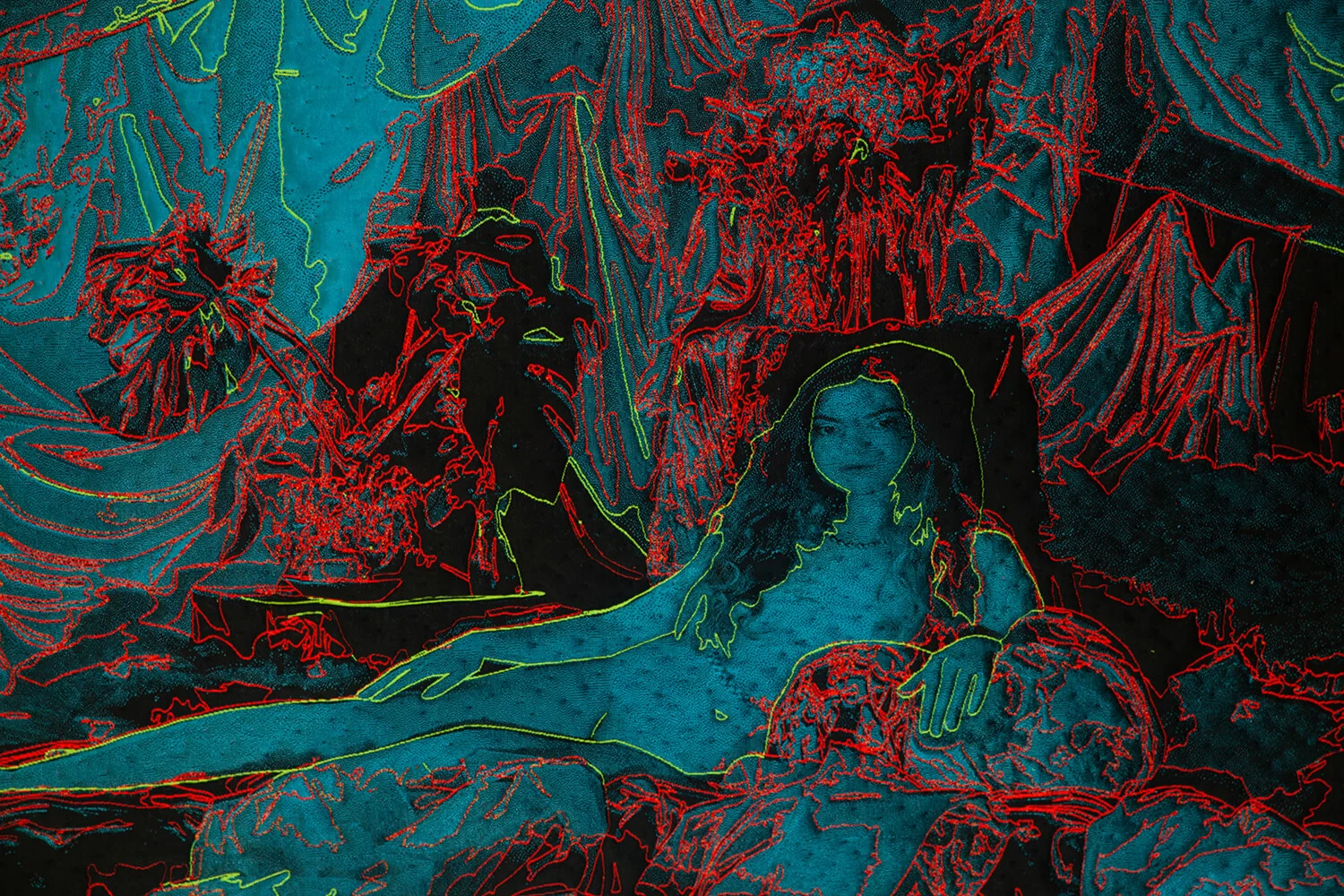
Contemplating 2012’s skyrocketing tuition fees, Newcastle-raised artist and designer Yamuna Forzani skipped out on art school in austerity Britain and instead embraced her local queer community in the Netherlands as a student at The Hague’s Royal Academy of Art. Now, this passion for LGBTQIA+ culture powers a multidisciplinary practice exploring identity, the body and femininity with a Pop Art-inspired visual punch. The recent Dutch Design Award winner speaks to writer Megan Wallace about the influence of ballroom and BDSM in her work and her playful but highly precise approach to textiles.
This article features some images that contain nudity, which may be NSFW.
Yamuna Forzani knits, but not as your grandmother knows it. Instead of festive jumpers or FairIsle hats, the 29-year-old artist uses industrial knitting for splashy, graffiti-referencing streetwear and vivid wall hangings celebrating and deconstructing the feminine form.

In Shibari, you’re constrained but in a way that feels very liberating because you just have to surrender.
She’s particularly keen to speak about one method: 3D knitting, which she learnt about in 2021, courtesy of technicians at the Tilburg Textile Museum. “The 3D knit is constructed with two colors on the back, a filament yarn in the middle, and two colors on the front,” she explains. “In order to make this into an actual piece of fabric, you fuse the parts together: they can’t be separate layers like a sandwich, they need to be smushed together like a panini.”
Oddly enough, the technique’s intended use is far from the world of fine art——it was originally developed to create mattress toppers. But the process of working on the knit moved Forzani to take inspiration from a much less quotidian source—the world of BDSM, as explored in the acid-tinged wall hangings “Bind,” “Bound,” “Bound Inverted” and “Caress.” “The technicians at the museum kept speaking about ‘binding’ or ‘bonding’ together the different layers of the knit,” she says. “This made me think of BDSM, especially because I was also doing a BDSM workshop at a queer gym in Rotterdam at the time.”
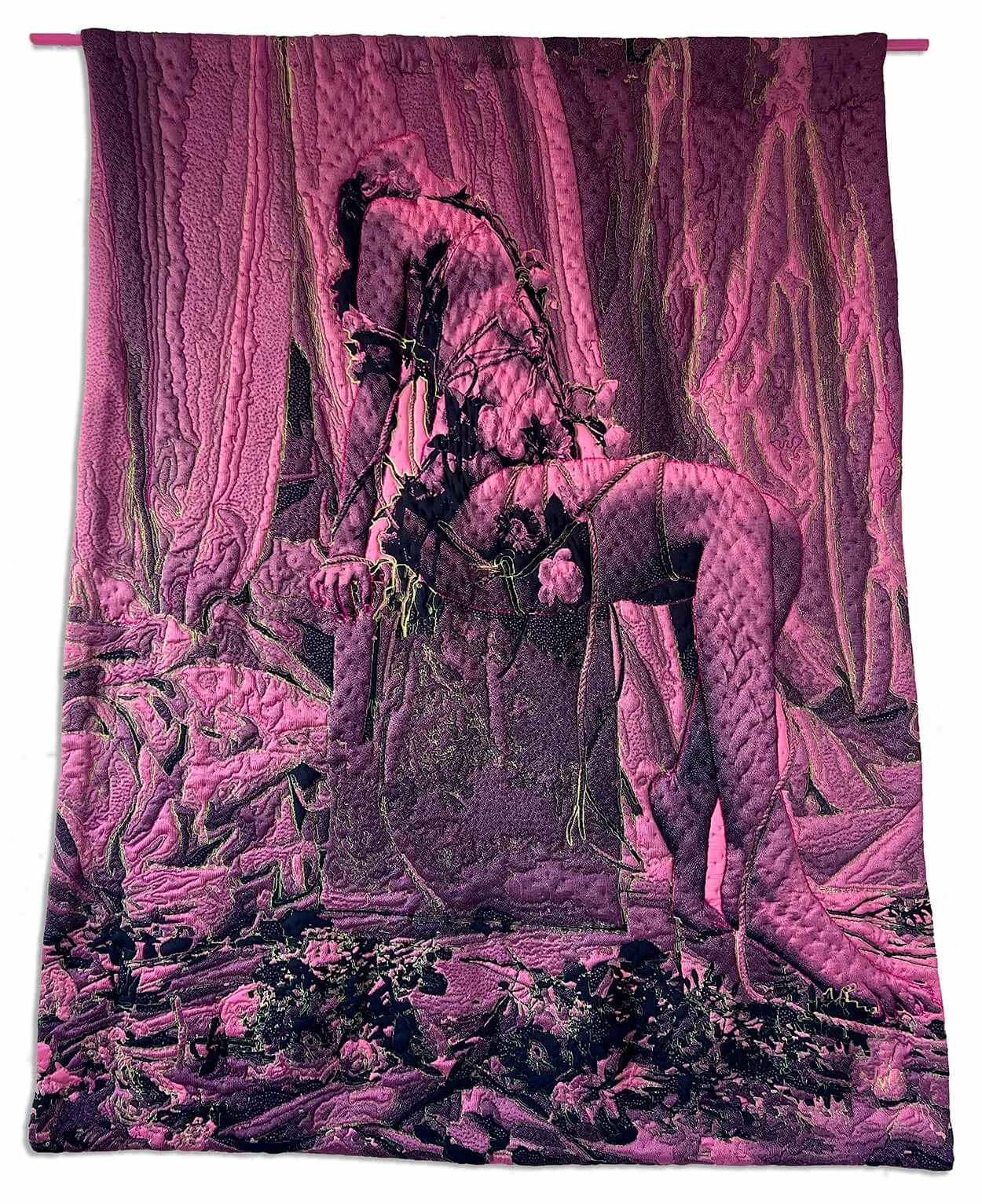

This plays out in the resulting, brightly-colored artworks as a push-pull between physical constriction and emotional liberation. The four knit works depict the artist’s own nude form, bound by ropes in a loose homage to Shibari, the ancient Japanese art of decorative bondage. “Shibari is a really beautiful artform, it’s about letting go and trusting,” she explains. “You’re constrained but in a way that feels very liberating because you can’t move, so you just have to surrender.”
While she uses her own form in these works, much of her earlier work features members of her community. Take the bead-embellished wall hanging “Venus In Libra,” which rewrites the tradition of the Renaissance nude with neon colors and jacquard knit. Against a lavish set, Forzani invited LGBTQIA+ friends to embody the gender and sexual perspectives left out of canonical pieces. “I wanted to mimic the classical poses, but using queer bodies as a way to empower and celebrate,” she explains.
Contrast this baroque portraiture with the livid red, abstract nudes (also using her own image) featured in her “Eye Candy” wall hanging series–something has clearly shifted. The artist doesn’t shy away from why this might be, stating that it’s a pragmatic shift towards building a body of work for sale. “If there’s more of a commercial intention, I don’t want to include bodies from my community. Yeah, we can make a beautiful artwork but then who’s buying it?” she explains. “I prefer to use my own image for these pieces, because then I have total autonomy.”
By creating work which can be sold via Rademakers gallery in Amsterdam, she’s able to funnel more resources into the areas of her practice which she’s most passionate about. The majority of this work revolves around the LGBTQIA+ experience, and is framed by the artist as a form of service; “It’s a love letter to my community,” she says. This artistic activity includes her bold, camp fashion designs created with a genderful (rather than genderless) ethos in order to celebrate the breadth of expression without binary gender distinctions.
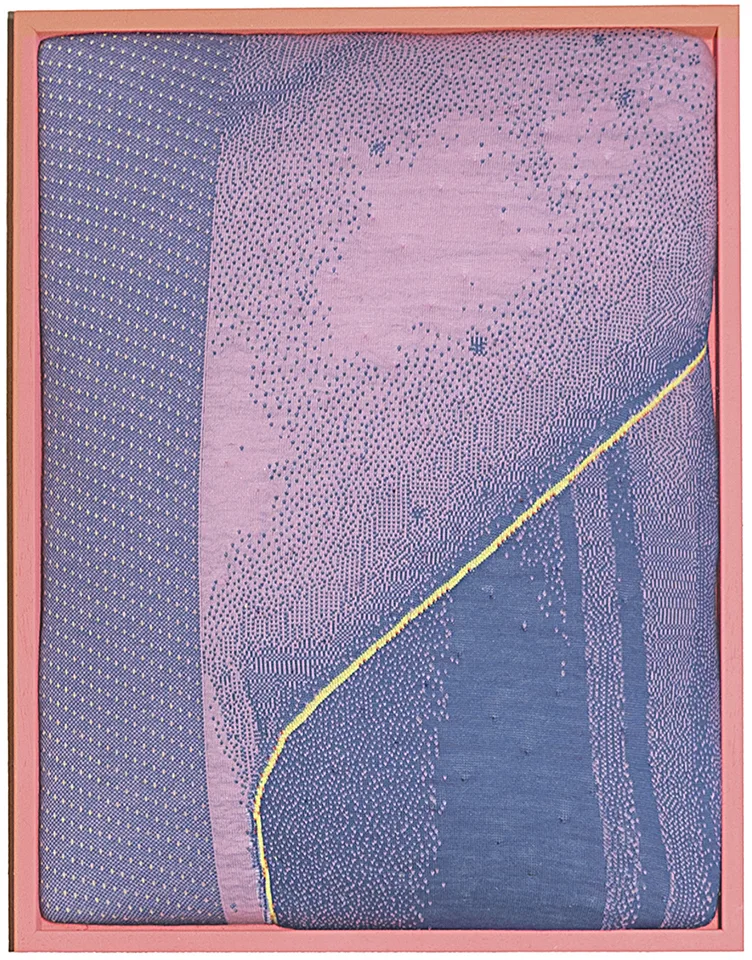
Celebrating and empowering LGBTQIA+ people through my practice is something I really love to do. It’s for the community, by the community.
Forzani is perhaps best known for her social design work, specifically her annual Utopia Ball x Fashion Show, which she co-organizes with fellow house member Seven Angels Garcon, which combines a catwalk show with LGBTQIA+ ballroom culture. She initially thought of the idea due to her own involvement with her local ballroom scene as a member of The Kiki House of Angels and House of Comme Des Garcons, and by noticing the cross-pollination between the fashion and ballroom worlds. “So many designers are inspired by ballroom clips that go viral or might come to a ball and be inspired by someone walking——whether it be the attitude or the concept,” she says. “I decided to organise a ball featuring a fashion show, to celebrate designers from the scene.”
While beginning at a grassroots level in 2018, it’s since gained institutional approval, winning Forzani a Dutch Design Award in 2022 and being hosted by Kunsthal Rotterdam two years in a row. However, Forzani is aware of the power dynamics that arise from placing queer culture——particularly ballroom, which is led by Black and Latinx trans people——into more mainstream spaces. “There have been many times when I’ve put my foot down,” she says. “I have been invited to participate in more commercial projects where they wanted me to include the ballroom scene and I have refused, as I felt their intentions were to fill a diversity quota and that they had no interest in understanding or uplifting the community. I don’t want to put my friends, who trust me, into a space where they are going to feel violated. Our community is sacred.”

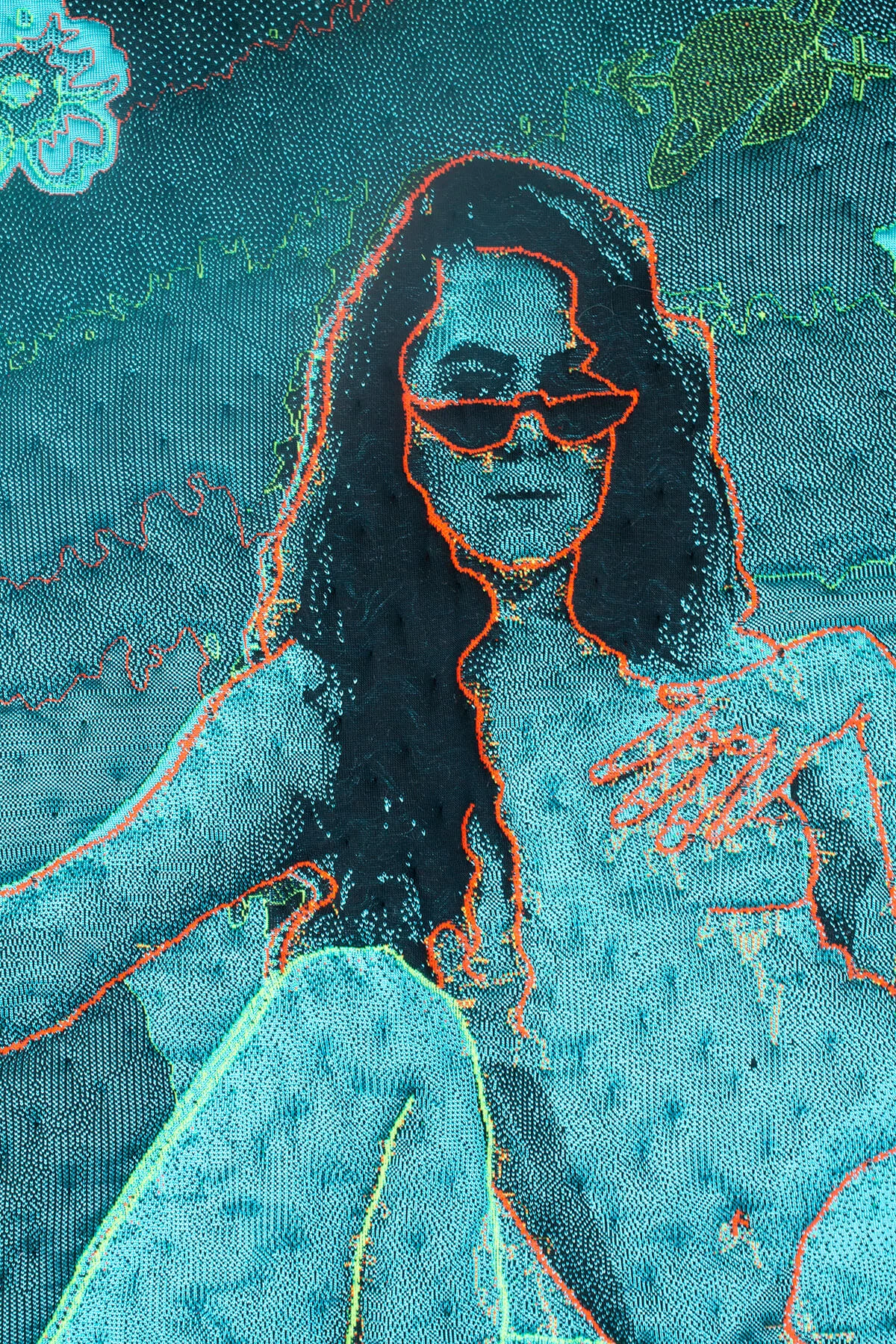
As Forzani continues to gain prominence in the art world, she’s committed to serving and celebrating the ballroom community which has welcomed and supported her on her journey——and recognizing her privilege. “I'm queer, but I'm also cis and white,” she says. “So as someone in a space which is predominantly trans and BPOC, I know that this community hasn’t been made for me. I’ve been accepted, but I’m a guest.” Now, rather than focus on showing her own designs at the Utopia Ball, Forzani directs most of her energy into producing and art directing the event as a way to spotlight emerging designers. “Celebrating and empowering [LGBTQIA+ people] through my practice is something that I really, really love to do and it brings me a lot of joy and purpose,” she says. “It’s for the community, by the community.”
